
Azov, previously known as Azak , is a town in Rostov Oblast, Russia, situated on the Don River just 16 kilometers (9.9 mi) from the Sea of Azov, which derives its name from the town. Population: 81,924 (2021 Census); 82,937 (2010 Census); 82,090 (2002 Census); 80,297 (1989 Census).
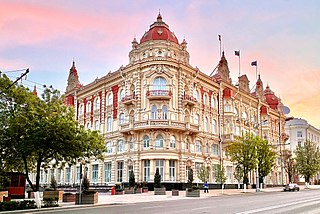
Rostov-on-Don is a port city and the administrative centre of Rostov Oblast and the Southern Federal District of Russia. It lies in the southeastern part of the East European Plain on the Don River, 32 kilometers (20 mi) from the Sea of Azov, directly north of the North Caucasus. The southwestern suburbs of the city lie above the Don river delta. Rostov-on-Don has a population of over one million people and is an important cultural centre of Southern Russia.
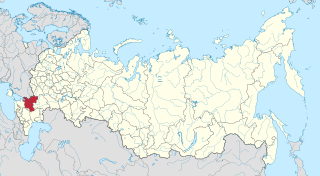
Rostov Oblast is a federal subject of Russia, located in the Southern Federal District. The oblast has an area of 100,967 square kilometers (38,984 sq mi) and a population of 4,200,729, making it the sixth most populous federal subject in Russia. Its administrative center is the city of Rostov-on-Don, which also became the administrative center of the Southern Federal District in 2002.
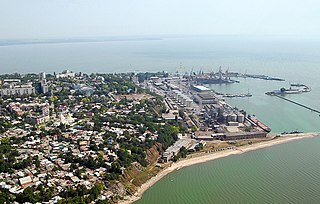
Taganrog is a port city in Rostov Oblast, Russia, on the north shore of Taganrog Bay in the Sea of Azov, several kilometers west of the mouth of the Don River. It is in the Black Sea region. Population: 245,120 (2021 Census); 257,681 (2010 Census); 281,947 (2002 Census); 291,622 (1989 Census).

The southern Russian city of Taganrog began as one of Russia's first planned cities under Peter the Great. To protect the newly conquered Sea of Azov region, the Russians opened a naval base there in 1698 and a city and seaport were built. However, after the Turkish victory in the war of 1710–1711, Taganrog city and port were demolished prior to handover to the Turks.

Yekaterinoslav Governorate was an administrative-territorial unit (guberniya) of the Russian Empire, with its capital in Yekaterinoslav. It bordered Poltava Governorate to the north, Don Host Oblast to the east, Sea of Azov to the southeast, Taurida Governorate to the south, and Kherson Governorate to the east, and covered the area of the Luhansk, Donetsk, Dnipropetrovsk, and Zaporizhzhia Oblasts of modern Ukraine.

Rudolf (Ruvim) Lazarevich Samoylovich was a Soviet polar explorer, professor, and doctor of geographic sciences.

Gully of Petrushino is a site on the outskirts of Taganrog, Russia, at which 7,000 Soviet civilians, mostly Jews, were massacred between 1941 and 1943 by the German army, with the assistance of non-German divisions, during their occupation of Taganrog.
Telegraph House is a two-story building in the city of Taganrog, Rostov region. It is The object of cultural heritage of regional importance. At the end of the 19th century in the building was a telegraph station.

The Idelson Pharmacy is a landmark in the city of Taganrog, Rostov Region, Russia, located in Krasny Pereulok 23. The modern name is Pharmacy No.53. According to Decision No.301 of 18 November 1992, the house where Idelson's pharmacy was located recognized as an object of the cultural heritage of the regional values.

The House of Kukolnik is an object of cultural heritage of regional value which settles down the street Petrovsky, 74 in the city of Taganrog of the Rostov Oblast. The building remained till the 21st century.
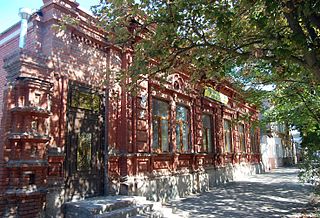
The House of Rabinovich is a mansion located in Taganrog, Rostov Oblast, Russia. It stands between Apostolopulo's House and the House of Drossi. It is a famous example of the classic 1870s style of architecture and is a representation of Neo-Greek architectural style. Architectural monuments are among the Russian Federations' objects of cultural heritage and regional value.
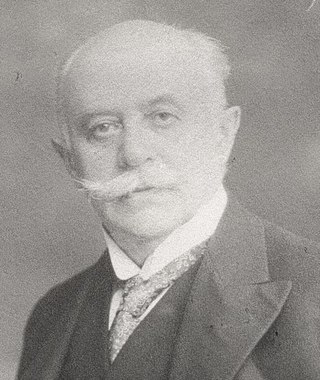
Lev Philippovitch Wolkenstein was a Russian jurist, lawyer and cadet.
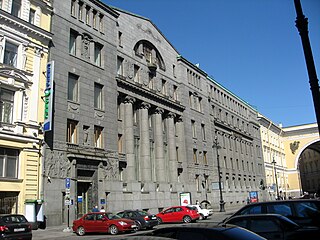
The Azov-Don Commercial Bank or Azovsko-Donskoi Commercial Bank, often referred to simply as the Azov-Don Bank, was one of the largest joint-stock commercial banks in the late Russian Empire. It was founded in 1871 in the city of Taganrog on the shores of the Sea of Azov, to which its name refers as well as the Don River. In 1903, it relocated its head office to Saint Petersburg. It was eventually liquidated in 1917, like all other commercial banks in Russia.
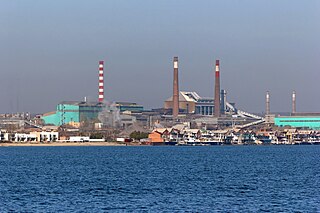
The Taganrog Iron & Steel Factory (TAGMET) is the largest manufacturer of steel pipes in the South of Russia. It was founded in 1896 as the Taganrog Metallurgical Company, a Russian-Belgian joint-stock company. The Azov-Don Commercial Bank, a Taganrog based commercial bank was instrumental in financing the original company, and Boris Kamenka of that bank was appointed to its board.

Viktor Petrovich Vodolatsky is a Russian politician who is a member of the Federal Assembly, a Deputy of the State Duma of the V, VI, VII convocations. He is a member of the United Russia faction, a First Deputy Chairman of the State Duma Committee on CIS Affairs, Eurasian Integration and Relations with Compatriots, and a Chairman of the Supreme Council of SKVRiZ.

Rostovsocbank was a Russian commercial bank. It was established in 1989 and registered by the Central Bank of Russia in October 1990. The first commercial bank in the south of Russia was founded as a result of the commercialisation of the Rostov office of the USSR Zhilsocbank. In the 1990s, it used to be a major bank in the Rostov region with several branches in Rostov-on-Don and other cities such as Taganrog, Shakhty, Gukovo, and Donetsk.

Leonid Alexandrovich Shafirov is an entrepreneur, financier, scientist, PhD

Boris Pavlovich Listov is a Russian economist, Chairman of the Board of JSC "Rosselkhozbank". He was a member of the Federation Council Federal Assembly of the Russian Federation from the Legislative Assembly of the Jewish Autonomous Region from 2007 to 2009.
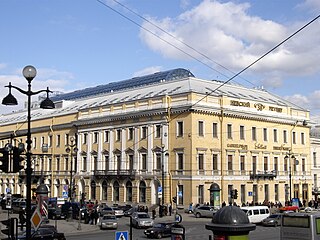
The Volga-Kama Commercial Bank, often referred to simply as the Volga-Kama Bank, was a major commercial bank of the Russian Empire. Founded in 1870, it was Russia's largest bank by total assets at the start of the 20th century. Like all Russian commercial banks, it was liquidated in late 1917. Its name refers to the rivers Volga and Kama.



















